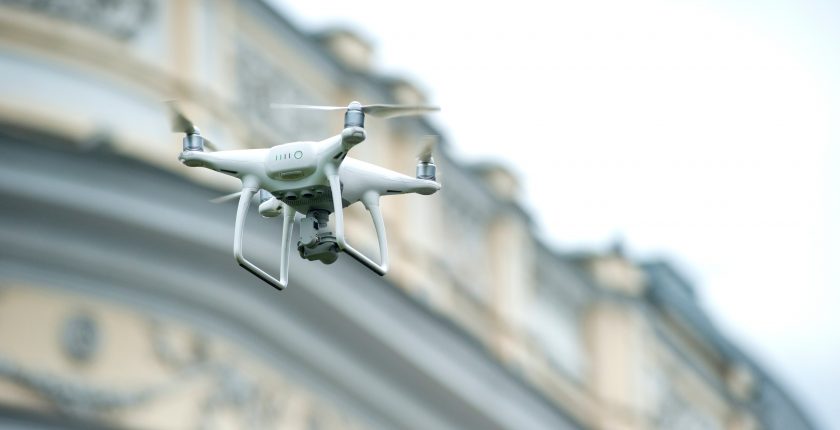How technology is shaping the future of logistics
The fast-paced evolution of technology is pushing the boundaries and transforming how the world does business. Nowadays, people are accustomed to everything being online and at our fingertips for immediate access. Through Amazon, the pioneer of fast-paced delivery services, it is possible to receive a package less than an hour after ordering it, depending on where you live. This is a concept that people would never have imagined possible, even as few as five years ago.
Improved technology has also increased productivity in the supply chain, minimising costs and errors. These advances benefit all areas of the logistics industry, from road transportation and international transportation (ocean and air), through to supply chain management and shipment tracking.
Here are five major technological advances that are changing and shaping the future of the logistics industry that your business needs to be aware of:
Shipment Tracking Systems
Previously, customers booked shipments, received an estimated delivery date and then were left waiting in the unknown, unless they made a phone call. Today, internet and software advances allow customers access to shipping and tracking systems 24/7. Not only does this enhance the user experience, but it saves time, money and manpower for the company as well.
Now, tracking systems enable customers to monitor and manage their shipments and receive notifications, messages, customised reporting and customer accounts which contain important information relating to the cargo destined for them.
Internet of Things (IoT) and Radio Frequency Identification (RFID)
Today, many devices are designed with built-in Wi-Fi capabilities and sensors, from light switches to cars, meaning you can easily turn on your heating from your smartphone. This easy access to Wi-Fi and the internet just happens to connect everyone to everything, which is why it is called the Internet of Things.
IoT is opening up many opportunities for the supply chain, such as reducing costs and delays by avoiding risks. Sensors are built into all kinds of vehicles, including cabs, cargo ships and trains, to name a few. They connect to an alarm system or dispatcher which is monitoring and tracking their movements. These sensors process and transmit the information to the crew, who then gains insight into hidden risks and knowledge. Although IoT is by no means an entirely new technology, it continues to impact the future of logistics, allowing for a more accurate in-transit visibility and delivery of goods.
RFID technology, which has also been in use for a few years, is a popular labour saving way in which companies can track their inventory. A tag or sensor is placed on the product and radio waves are sent out. The data is then received and processed by the company. Similar to RFID tags are barcodes, but the superior speed of information delivery and data processing of RFIDs is more appealing to businesses and the way technology is moving. Today, many companies are using RFID tags in their distribution warehouses to monitor containers. Other industries are already using RFID tags, such as the apparel industry and major theme parks.
Autonomous Trucks and Drones
A world in which a computer drives you from point A to point B or you receive a package from a flying unmanned aerial vehicle sounds like something out of a Hollywood blockbuster, but this is the direction we are headed towards. Autonomous cars are already a reality, with trucks not too far behind. Uber has already made long hauls using autonomous trucks, with Tesla releasing their own this year. While it was not completely driverless, with a driver in the passenger seat to monitor the computer, it is a huge step in this breakthrough technology and has the potential to increase efficiency in the delivery process.
Amazon has also announced the future of packages being delivered right to doorsteps by drones, called Amazon Prime Air. Drones deliveries are still a few years off due to regulatory measures and associated costs, but the thought of not having to sit around during a four-hour time span waiting for a package is certainly appealing.
Enhanced GPS Accuracy
Long gone are the days when people printed out directions from the computer before leaving the house. Now, almost everyone uses GPS, whether it is built-in on their vehicles or installed on their smartphones. The accuracy of these devices has drastically increased throughout the years, not only helping frustrated, lost drivers but also improving the supply chain. The advanced accuracy of GPS allows for increased productivity and satisfied customers, by tracking vehicle locations and improving hauls through access to live traffic data.
Social Media
The power of social media is optimising the logistics industry and operations as a whole. These platforms are becoming the easiest and most efficient way for companies to communicate with customers, conveying urgent information, industry news and rapid customer responses. According to the Aberdeen Group, businesses that provide consistent customer service quality across multiple channels will retain 89 per cent of their customers, whereas companies which do not provide consistent omni-channel customer service are only able to retain around 33 per cent of their customers. The major platforms to get news and updates to customers include Facebook, LinkedIn and twitter.
To remain competitive and enhance efficiencies, keeping up with the latest technology is a must. The logistics industry is benefitting immensely from innovations in technology and will continue to flourish, in turn offering a host of excellent job prospects, as further advances are made.


